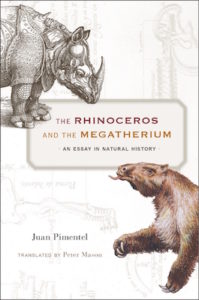 What is the purpose of studying an unfamiliar living creature? Is it to confirm what others have previously declared to be true about it, or is it to examine the creature in and of itself to discover what is true about it?
What is the purpose of studying an unfamiliar living creature? Is it to confirm what others have previously declared to be true about it, or is it to examine the creature in and of itself to discover what is true about it?
And how does one interpret something that obviously once was alive but that resembles nothing known to presently exist – particularly if the idea of extinction does not fall within your understanding of how nature functions?
These are only two of the many intriguing questions posed by Professor Juan Pimentel of the Institute of History (CSIC), Madrid, in his new book The Rhinoceros and the Megatherium: An Essay in Natural History from Harvard University Press.
Centering around two curious events in the history of natural history – the living Indian Rhinoceros shipped from its native subcontinent to Lisbon in 1515, and the bones of a Megatherium discovered in South America in 1788 and later sent on to Madrid for further study – Professor Pimentel delves deep into the philosophy, as well as cultural history, of science in his reflections upon how the practice of natural history changed in the interim between the two events, as well as the roles imagination and representation play in both historical as well as scientific inquiry.
If you enjoyed reading this, please consider signing up for The Well-read Naturalist's newsletter. You'll receive a helpful list of recently published reviews, short essays, and notes about books in your e-mail inbox once each fortnight.
